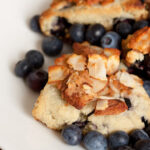Hosting a Christmas feast is a joyous tradition, but ensuring everyone can partake safely adds a layer of complexity. This guide navigates the challenge of creating a delicious and inclusive Christmas meal free from the eight major allergens: milk, eggs, peanuts, tree nuts, soy, wheat, fish, and shellfish. We’ll explore menu planning, safe food preparation techniques, sourcing allergen-free ingredients, crafting delectable allergen-free recipes, and managing guest dietary needs, transforming potential anxieties into a celebration for all.
From meticulously curated recipes featuring creative substitutions for common allergens to detailed guidance on preventing cross-contamination and managing guest communication, this comprehensive guide empowers you to host a memorable and worry-free Christmas feast. Learn how to transform classic Christmas dishes into allergen-friendly delights, ensuring everyone enjoys the festive cheer.
Planning a Safe & Delicious Menu

Creating a Christmas feast free of the eight major allergens requires careful planning and creative substitutions. This involves understanding ingredient labels, utilizing allergen-free alternatives, and adapting traditional recipes to ensure both safety and deliciousness for all your guests. The following menu provides a framework for a festive and allergy-friendly celebration.
A Sample Allergen-Free Christmas Feast
This menu is designed to be free of milk, eggs, peanuts, tree nuts, soy, wheat, fish, and shellfish. Each dish uses carefully selected ingredients and substitutions to maintain flavor and texture.
| Dish Name | Ingredients | Summary | Allergen Information |
|---|---|---|---|
| Roasted Turkey with Herb Butter (Dairy-Free) | Turkey breast, dairy-free herb butter (olive oil, herbs, spices), salt, pepper. | A classic Christmas centerpiece, adapted for dairy-free diets. The rich flavor of the turkey is enhanced with a flavorful dairy-free herb butter. | Free of milk, eggs, peanuts, tree nuts, soy, wheat, fish, shellfish. |
| Sweet Potato Casserole (Dairy-Free, Gluten-Free) | Sweet potatoes, maple syrup, coconut milk (full-fat), cornstarch, cinnamon, nutmeg, gluten-free breadcrumbs (made from rice flour or cassava flour). | A creamy and subtly sweet side dish, perfect for a holiday meal. The coconut milk provides richness without dairy. | Free of milk, eggs, peanuts, tree nuts, soy, wheat, fish, shellfish. |
| Green Bean Casserole (Dairy-Free, Gluten-Free) | Green beans, dairy-free cream of mushroom soup (made from vegetable broth, mushrooms, cornstarch, and spices), gluten-free fried onions (made from tapioca flour). | A classic holiday side, reimagined for allergy-conscious guests. The creamy texture is achieved without dairy or wheat. | Free of milk, eggs, peanuts, tree nuts, soy, wheat, fish, shellfish. |
| Cranberry Sauce (No Added Sugar) | Fresh cranberries, orange juice, maple syrup (optional, for slight sweetness). | A tart and refreshing cranberry sauce, naturally sweetened. The vibrant color and tart flavor complement the richness of the turkey. | Free of milk, eggs, peanuts, tree nuts, soy, wheat, fish, shellfish. |
| Gluten-Free Pumpkin Pie (Dairy-Free, Egg-Free) | Pumpkin puree, coconut milk (full-fat), maple syrup, spices (cinnamon, ginger, nutmeg), gluten-free pie crust (made from almond flour or tapioca flour). | A comforting and festive dessert, perfect for ending the meal. The creamy texture comes from coconut milk, and the crust is completely gluten-free. | Free of milk, eggs, peanuts, tree nuts, soy, wheat, fish, shellfish. (Note: ensure almond flour is sourced from a facility that does not process tree nuts if tree nut allergy is a concern.) |
Ingredient Substitutions
Many common allergy-inducing ingredients have suitable replacements. For example, dairy can be replaced with coconut milk, almond milk (ensure tree nut-free if necessary), or cashew cream; eggs can be substituted with applesauce or flax eggs; wheat flour can be replaced with almond flour, rice flour, or tapioca flour; and soy sauce can be replaced with coconut aminos. Always carefully check ingredient labels to ensure products are free from cross-contamination. For example, in the dairy-free herb butter, olive oil provides the richness and moisture normally supplied by butter. The gluten-free breadcrumbs in the sweet potato casserole offer the same textural element without containing wheat. The use of coconut milk in the pumpkin pie provides a creamy texture and sweetness, a suitable replacement for dairy.
Safe Food Preparation Techniques
Preparing a Christmas feast free from common allergens requires meticulous attention to detail, especially regarding food handling and preparation. Cross-contamination is a significant risk, so implementing robust safety measures is paramount to ensure a joyful and safe celebration for everyone. This section Artikels crucial steps to prevent allergen exposure and create a truly inclusive festive meal.
Preventing cross-contamination is achieved through diligent practices at every stage, from shopping to serving. Imagine a vibrant kitchen, bustling with activity, but with a clear system in place to maintain allergen-free zones. This careful approach ensures that the delicious aromas and flavors of the Christmas feast are enjoyed by all, without compromising anyone’s health and safety.
Kitchen Surface and Equipment Cleaning and Sanitization
Maintaining a pristine kitchen environment is fundamental to preventing cross-contamination. Before beginning any preparation, thoroughly clean all work surfaces, utensils, and equipment with hot, soapy water. This initial cleaning removes visible food debris and reduces the initial allergen load. Following this, sanitization is crucial. A solution of one tablespoon of unscented bleach per gallon of water is effective; allow surfaces to air dry completely after rinsing. Visualize a sparkling clean countertop, gleaming under the festive lights, ready for allergen-free food preparation. For equipment like blenders and food processors, disassemble them completely for thorough cleaning and sanitization. Pay particular attention to crevices and hard-to-reach areas. This comprehensive cleaning ensures that no trace of allergens remains, creating a safe environment for preparing allergen-free dishes.
Safe Food Handling Practices
Careful handling of ingredients is crucial. Use separate cutting boards, knives, and utensils for allergen-free foods and foods containing common allergens. Picture two distinctly colored cutting boards, one for allergen-free ingredients and another dedicated solely to potentially allergenic items. This visual separation helps prevent accidental cross-contamination. Similarly, dedicate specific cooking pots and pans for allergen-free dishes. Always wash your hands thoroughly with soap and water before and after handling any food, especially after handling potentially allergenic items. Imagine a visual reminder, perhaps a brightly colored hand-washing sign, strategically placed near the preparation area, to encourage frequent handwashing. This consistent practice minimizes the risk of transferring allergens between foods.
Food Labeling and Storage
Proper labeling and storage are essential for avoiding accidental allergen consumption. Clearly label all containers with the contents and any potential allergens, using permanent markers. For instance, a jar of homemade cranberry sauce might be labeled “Cranberry Sauce – Gluten-Free, Dairy-Free.” This detailed labeling eliminates any guesswork and allows guests to easily identify allergen-free options. Store allergen-free foods separately from those containing allergens, ideally in designated areas or containers to prevent accidental mixing or contact. Visualize a pantry organized with clear containers, each meticulously labeled and separated by allergen status. This clear organization minimizes confusion and enhances safety. Refrigerate perishable items promptly and follow recommended storage temperatures to maintain food safety and prevent spoilage. This organized and clearly labeled system ensures safe and efficient food management, minimizing the risk of accidental allergen consumption.
Sourcing Allergen-Free Ingredients
Securing allergen-free ingredients for your Christmas feast requires careful planning and sourcing. Knowing where to look and how to scrutinize labels is crucial for ensuring a safe and enjoyable celebration for everyone. This section will guide you through the process, from identifying reliable suppliers to understanding the nutritional aspects of allergen-free alternatives.
Finding allergen-free ingredients can be easier than you think, with a growing number of dedicated suppliers and retailers catering to specific dietary needs. However, vigilance is key, as even products labeled “allergen-free” can sometimes contain trace amounts due to cross-contamination during processing or packaging. Thorough label reading and understanding the potential for hidden allergens are vital steps in ensuring a safe and delicious meal.
Reliable Sources for Allergen-Free Ingredients
Several avenues exist for acquiring allergen-free ingredients, each with its own advantages and disadvantages. Choosing the right source depends on your location, budget, and the specific ingredients you need. Careful consideration of these factors will ensure you have everything you need for a successful allergen-free Christmas feast.
- Specialty Health Food Stores: These stores often carry a wide range of allergen-free products, including certified gluten-free, dairy-free, and nut-free options. They typically have knowledgeable staff who can assist with finding specific items and answer questions about ingredients and sourcing.
- Online Retailers: Many online retailers specialize in allergen-free foods, offering a vast selection and convenient home delivery. Websites often provide detailed product information, including allergen statements and certifications. However, it’s important to be aware of potential shipping costs and delivery times.
- Large Grocery Stores: Increasingly, large supermarket chains are expanding their allergen-free sections, offering a wider selection of certified products than in the past. While not as extensive as specialty stores, they can be a convenient option for commonly needed ingredients.
- Direct from Farmers or Producers: Sourcing ingredients directly from local farmers or producers, particularly for fresh produce, can offer greater control over the ingredients’ origin and handling. This approach can be especially beneficial for minimizing cross-contamination risks.
Checking Food Labels for Allergens
Meticulous label reading is paramount when shopping for allergen-free ingredients. Even products seemingly free of common allergens can contain hidden traces due to processing or shared manufacturing facilities. Understanding label terminology and potential pitfalls is essential for safe food preparation.
Always look for clear allergen statements. These are usually prominently displayed, listing any potential allergens present. Pay close attention to the ingredient list, searching for common allergens and their derivatives (e.g., whey, casein for dairy; soy lecithin for soy). Words like “may contain” or “processed in a facility that also processes…” indicate a potential risk of cross-contamination. If unsure about an ingredient, contact the manufacturer directly for clarification.
Nutritional Comparison of Allergen-Free Alternatives
Many allergen-free alternatives are nutritionally comparable to their traditional counterparts. However, some differences exist. Understanding these nuances can help you make informed choices to maintain the nutritional balance of your Christmas feast.
| Ingredient | Traditional Version | Allergen-Free Alternative | Nutritional Comparison Notes |
|---|---|---|---|
| Milk | Cow’s milk | Almond milk, soy milk, oat milk | Almond milk is lower in protein than cow’s milk; soy milk can be higher in protein; oat milk often has added sugars. Check labels for added vitamins and minerals. |
| Butter | Dairy butter | Coconut oil, vegan butter (various types) | Coconut oil is high in saturated fat; vegan butters vary in nutritional content, some mimicking dairy butter more closely than others. |
| Flour | Wheat flour | Gluten-free flour blends (rice flour, almond flour, etc.) | Gluten-free flour blends can have different nutritional profiles depending on their composition. Some may be lower in protein than wheat flour. |
This Christmas, let the spirit of inclusivity shine brightly as you create a festive spread that delights everyone, regardless of dietary restrictions. By following these guidelines, you’ll not only provide a safe and delicious meal but also demonstrate thoughtful consideration for your guests, making your Christmas feast a truly memorable event. Remember, a little planning goes a long way in creating a joyful and allergy-safe celebration for all.
Commonly Asked Questions
What if a guest has an allergy not listed in the eight major allergens?
Always confirm any allergies directly with your guests and make accommodations based on their specific needs. Clearly communicate this need in your guest questionnaire.
How can I ensure my kitchen is completely allergen-free?
Complete sanitization is crucial. Deep clean all surfaces and utensils, paying close attention to crevices where allergens may hide. Use separate cutting boards and utensils for allergen-free ingredients.
Where can I find allergen-free alternatives to common spices?
Most spices are naturally allergen-free, but always check labels to ensure they haven’t been processed in facilities that handle allergens. Look for certified allergen-free brands for extra assurance.
What should I do if a guest has a severe allergic reaction?
Have a plan in place. Know where your nearest emergency services are located and have a first-aid kit readily available. If someone has a severe reaction, call emergency services immediately.


